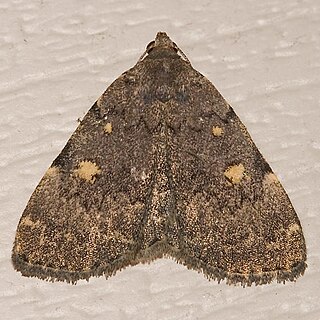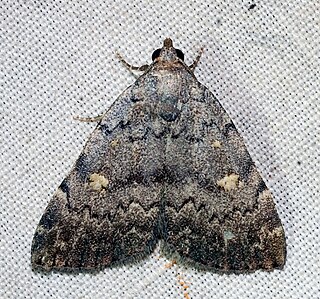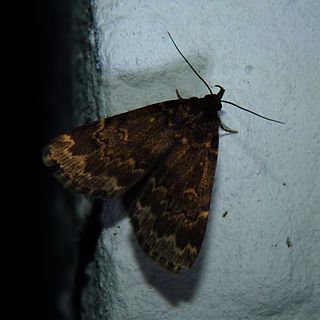
Evil Dead II is a 1987 American horror comedy film directed by Sam Raimi, who co-wrote it with Scott Spiegel, and produced by Robert Tapert. The film is the second installment in the Evil Dead film series and is considered both a remake and sequel to The Evil Dead (1981). The film stars Bruce Campbell as Ash Williams, who vacations with his girlfriend to a remote cabin in the woods. He discovers an audio tape of recitations from a book of ancient texts, and when the recording is played, it unleashes a number of demons which possess and torment him.

Agostino "Dino" De Laurentiis was an Italian-American film producer. Along with Carlo Ponti, he was one of the producers who brought Italian cinema to the international scene at the end of World War II. He produced or co-produced more than 500 films, of which 38 were nominated for Academy Awards. He also had a brief acting career in the late 1930s and early 1940s.

Maximum Overdrive is a 1986 American science fiction comedy horror film written and directed by Stephen King. The film stars Emilio Estevez, Pat Hingle, Laura Harrington, and Yeardley Smith. The screenplay was inspired by and loosely based on King's short story "Trucks", which was included in the author's first collection of short stories, Night Shift, and follows the events after all machines become sentient when Earth crosses the tail of a comet, initiating a world-wide killing spree.

The Herminiinae are a subfamily of moths in the family Erebidae. The members of the subfamily are called litter moths because the caterpillars of most members feed on dead leaves of plants, though others feed on living leaves, and/or the mushrooms of fungi as in the case of genus Idia (moth).

Idia is a genus of litter moths of the family Erebidae first described by Jacob Hübner in 1813.

Idia aemula, the common idia, powdered snout or waved tabby, is a litter moth of the family Erebidae. The species was first described by Jacob Hübner in 1813. It is found from Canada south to Florida and Texas. It has been reported in the Palearctic.

Idia concisa, the pale-winged idia is a litter moth of the family Erebidae. The species was first described by William Trowbridge Merrifield Forbes in 1954. It is widespread across much of eastern North America.

Idia lubricalis, the glossy black idia, is a litter moth of the family Erebidae. The species was first described by Carl Geyer in 1832. It is found from Canada south to Florida and Texas in deciduous forests.

Idia occidentalis is a species of litter moth of the family Erebidae first described by Smith in 1884. It is found in North America from southern Alberta and British Columbia, south to Colorado, Arizona and California.

Idia americalis, the American idia or American snout, is a litter moth of the family Erebidae. The species was first described by Achille Guenée in 1854. It is commonly found in moist forests in North America, ranging from southern Canada to Florida and Texas. It is nocturnal and can be lured by sugar baits and light traps.

Idia diminuendis, the orange-spotted idia, is a litter moth of the family Erebidae. The species was first described by William Barnes and James Halliday McDunnough in 1918. It is found in North America from Wisconsin to Nova Scotia, south to Florida and Texas.

Idia forbesii, or Forbes' idia moth, is a litter moth of the family Erebidae. The species was first described by George Hazen French in 1894. It is found in North America from Wisconsin to Quebec, south to Florida and Texas.
Idia julia, or Julia's idia, is a litter moth of the family Erebidae. The species was first described by William Barnes and James Halliday McDunnough in 1918. It is found from southern Canada south to Georgia and Texas.

Idia rotundalis, the chocolate idia or rotund idia moth, is a litter moth of the family Erebidae. The species was first described by Francis Walker in 1866. It is found from southern Canada to Florida and Texas.
Idia scobialis, the smoky idia, is a litter moth of the family Erebidae. The species was first described by Augustus Radcliffe Grote in 1880. It is found in North America from Michigan, southern Quebec and Maine, south to Florida and at least Kentucky.
Idia denticulalis, the toothed idia, is a litter moth of the family Erebidae. The species was first described by Leon F. Harvey in 1875. It is found in Quebec, Canada, and the US from Wisconsin to New England, south to Alabama and Texas.
Idia majoralis, the greater idia, is a litter moth of the family Erebidae. The species was first described by J. B. Smith in 1895. It is found in Canada from Ontario and Quebec, south into the United States, where it has been recorded from Illinois, Wisconsin and Missouri.
Idia gopheri, the tortoise commensal noctuid moth, is a litter moth in the family Erebidae. The species was first described by J. B. Smith in 1899.
Idia terrebralis is a species of litter moth of the family Erebidae first described by William Barnes and James Halliday McDunnough in 1912. It is found in North America, including Illinois.
Idia immaculalis, the immaculate idia, is a litter moth of the family Erebidae. The species was first described by George Duryea Hulst in 1886. It is found in North America from at least California, north and east across Montana to southern Alberta and Saskatchewan.












